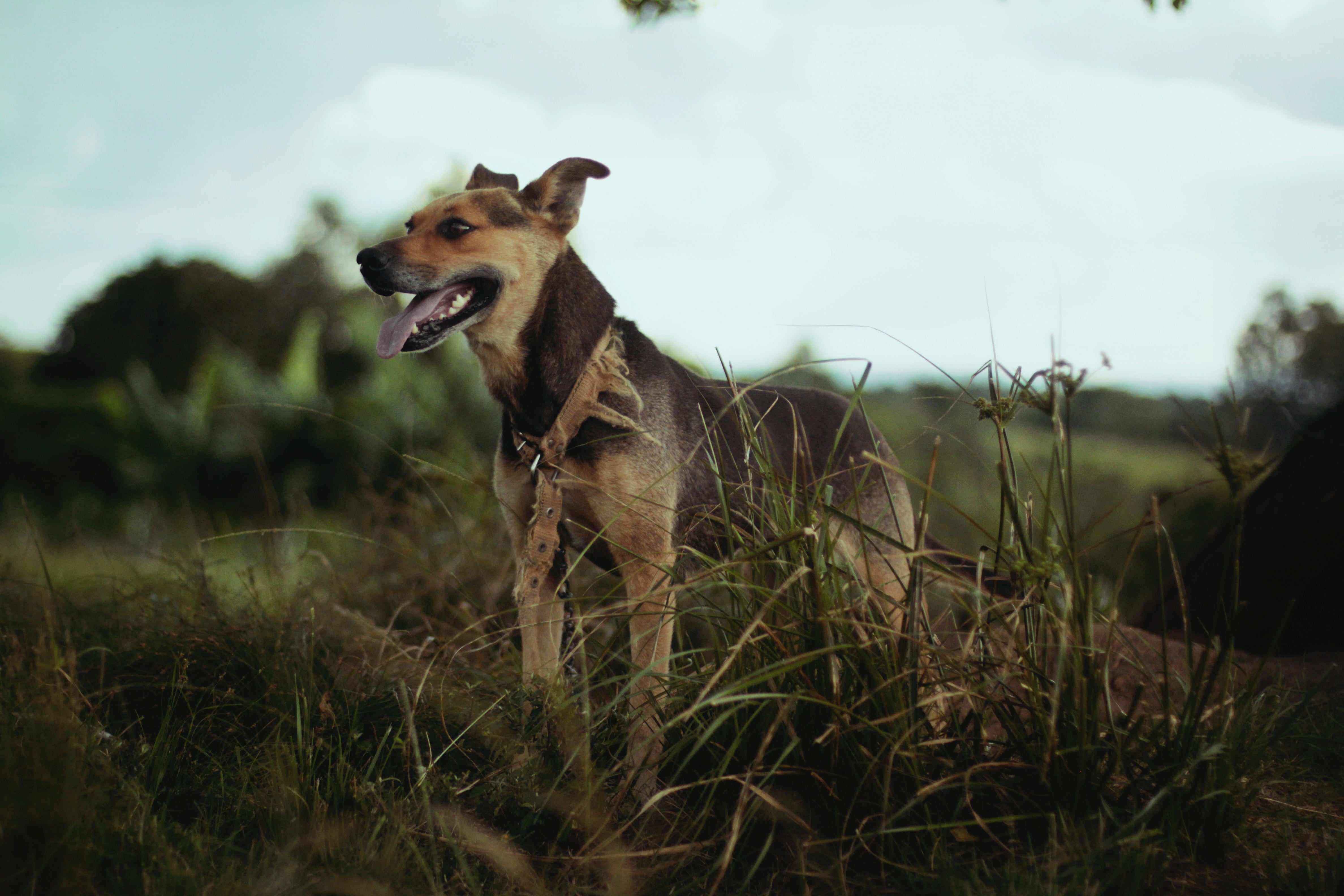Any dog owner knows how excited their four-legged friend gets when it’s time to play fetch. Of course, a lot of this has to do with how much your pup loves spending time with his favorite person, but there’s a bit more to it, too. Chasing and retrieving are some of your dog’s most basic instincts, thanks to his inherited prey drive.
What is Prey Drive?
All dogs have an instinctual prey drive: a desire to chase or hunt prey. Depending on the dog and his surroundings, “prey” can refer to anything that moves such as smaller animals, children, or even cars and bikes. Some dogs may even consider toys, balls, and sticks to be their prey.
All dogs have some level of prey drive, because all dogs descended from the predatory gray wolf. That being said, prey drive manifests differently depending on the dog breed. Australian Shepherds, Border Collies, Terriers, Hounds, Retrievers, Spaniels, and Pointers, for example, tend to have high prey drives. Other dogs, such as Huskies and Boxers, can also have strong prey drives even though they were not specifically bred for hunting, herding, or sport. Some dogs prefer stalking, others prefer chasing, and others are more inclined to go in for a bite.
Prey drive is generally harmless. Chasing is fun for dogs when playing fetch. For some breeds, playing fetch or shaking stuffing out of a toy are harmless ways to satisfy their predatory needs. For some dogs, though, a higher prey drive could have some negative outcomes: stalking and hurting smaller animals, or chasing cars and bikes which can be dangerous. Some dogs are easily distracted by moving objects—squirrel!—and unable to focus on anything else, which can be frustrating when you’re trying to spend some quality time together.
Some dog owners confuse prey drive with aggressive tendencies. These, however, are not the same. Aggression is driven by emotions, while prey drive is driven by instinct. A dog with a strong prey drive is generally easier to tame than a dog with aggressive tendencies, though both are possible if done with lots of patience and unconditional love.

Taming Your Dog’s Prey Drive
Prey drive isn’t inherently bad. It can be useful for agility training, herding, or training dogs for military or police jobs. Sometimes, prey drive can even add an extra dose of friendliness and playfulness to a dog.
This doesn’t mean that inappropriate canine behavior can be excused. A dog’s prey drive cannot be suppressed, but with the proper training, it can be tamed.
For starters, become familiar with your dog’s individual prey drive and how it manifests. Is he satisfied with chasing a ball, or does he seem more interested in going after moving cars? Does he simply like to search for critters in your backyard, or does he like to surprise you by proudly showing off a maimed critter’s remains as a result of his hunting efforts? The stronger the prey drive, the more intentional you need to be when it comes to controlling your dog—especially around other animals or children.
It can be helpful to learn how to calmly redirect your dog’s attention away from the prey in question. Teach commands such as “stay” or “leave it,” and maintain eye contact so he stays focused on the current activity. It’s important to stay calm in these situations, as yelling or reprimanding your dog for wanting to chase an animal or object could only encourage him to go after it. Of course, always use positive reinforcement such as praise and treats whenever your pooch obeys you instead of his prey drive.
Dogs with bite or kill histories can be declared legally dangerous, which isn’t an outcome any dog owner wants. Keeping your dog under control is crucial for both his safety and the safety of those around him. For extra security, consider installing proper fencing in your yard, and using a leash whenever you’re out in public with your pup. It’s also important to train your dog in order to establish dominance over him whenever he’s off the leash—you want it to be clear to both of you that you’re the one in control, not him.
Healthy outlets can help to satisfy your dog’s need to chase or hunt, and redirect any bad habits. Games like tug-of-war, or any that involve chasing, catching, and retrieving are ideal. You could even get creative and set up your own backyard agility course. PetHonesty’s Hemp Mobility Chews promote healthy mobility for those active, ball-chasing dogs.
Managing Prey Drive at Home
As much as we want all of our pets to get along, this is sometimes just not the case. Perhaps you have an energetic dog who won’t stop chasing your introverted cat, or a hamster who’s better off staying away from your dog altogether.
Until you’re sure that your dog can maintain a harmonious environment with your other household pets or small children, it’s best to keep them separated and/or supervised at all times. When supervision is not an option, such as when you’re asleep or out for a long period of time, crate training is a good option for all parties involved.
Whenever you do allow your pets to interact, be sure to provide an escape for the smaller animal. For example, set up a baby gate that a cat can run under but the dog can’t jump over, or a cat tree/high shelf that the dog can’t reach.
It never hurts to make sure your pooch is up-to-date on his rabies vaccinations, too. You don’t want to have to worry about what could happen if an outdoor animal acts in self-defense and bites your dog while he’s trying to hunt.
In extreme cases, it may be worth it to invest in a professional dog trainer when it comes to managing your dog’s prey drive. Getting your dog’s prey drive under control benefits your entire household, as well as those you encounter out in public.
Sources:
https://www.foundanimals.org/control-dogs-predatory-chase-drive/
https://www.hillspet.com/dog-care/behavior-appearance/prey-drive-in-dogs
https://tractive.com/blog/en/safety/hunting-behavior-in-dogs
https://thebark.com/content/prey-drive-fact-or-fiction














